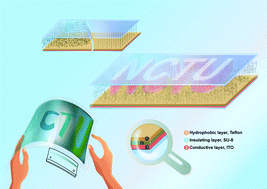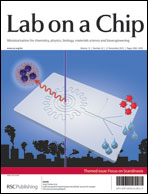A particle-based display medium and a driving mechanism insensitive to the charge polarity of those particles, based on the transformation of particle chains, are developed for reflective electronic paper displays. Particle chains are formed by dipole–dipole interactions between polarized particles with an appropriate electric field applied across the tested display medium, i.e. the solution that regulates the light in the field of display technology, containing neutral polystyrene (PS) particles dispersed in water. Formation of the particle chains results in a large change in optical transmittance and reflectance of the display medium. The performance of the particle chain displays (PCD) was evaluated according to macroscopic (device), microscopic (particle) and optical (reflectance) points of view. A display medium (thickness 100 μm) containing colored PS particles (3 μm, 2.5% w/v) was polarized to display the fixed images of the directly driven electrodes and programmable images of arrayed (5 × 5) electrodes with electric fields (0.48 MV m−1 and 0.09 MV m−1, 500 kHz, respectively). The formation of particle chains under electric fields (0.2 MV m−1 and 0.4 MV m−1, 500 kHz) was observed in the microscopic images of a display medium (thickness 100 μm) with fluorescent PS particles (5 μm, 1%). Images recorded with a confocal microscope demonstrated the particle chains. The opacity, a common parameter serving to characterize a display medium, was derived by measuring the reflectance ratio of a black background to a white background of the display medium with varied thickness and particle concentration. The temporal response of a display medium (thickness 50 μm) with black PS particles (3 μm, 5%) was tested. When an electric field (0.6 MV m−1, 500 kHz) was applied, the reflectance increased twice at the first data point in 0.7 s, attaining a contrast ratio of 2. Application of a voltage (20 s) yielded a contrast ratio of 10. The performance of a tested display medium, composed of simple PS particles and water and driven to form particle chains by polarization, is reported.


 Please wait while we load your content...
Please wait while we load your content...